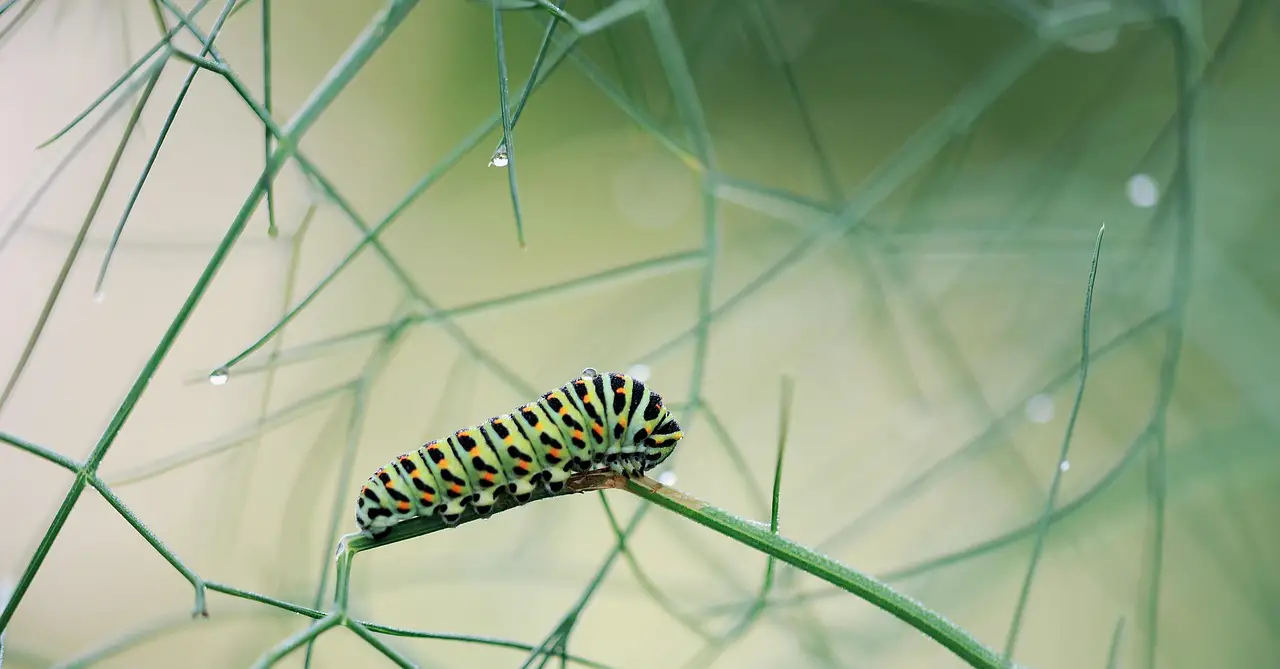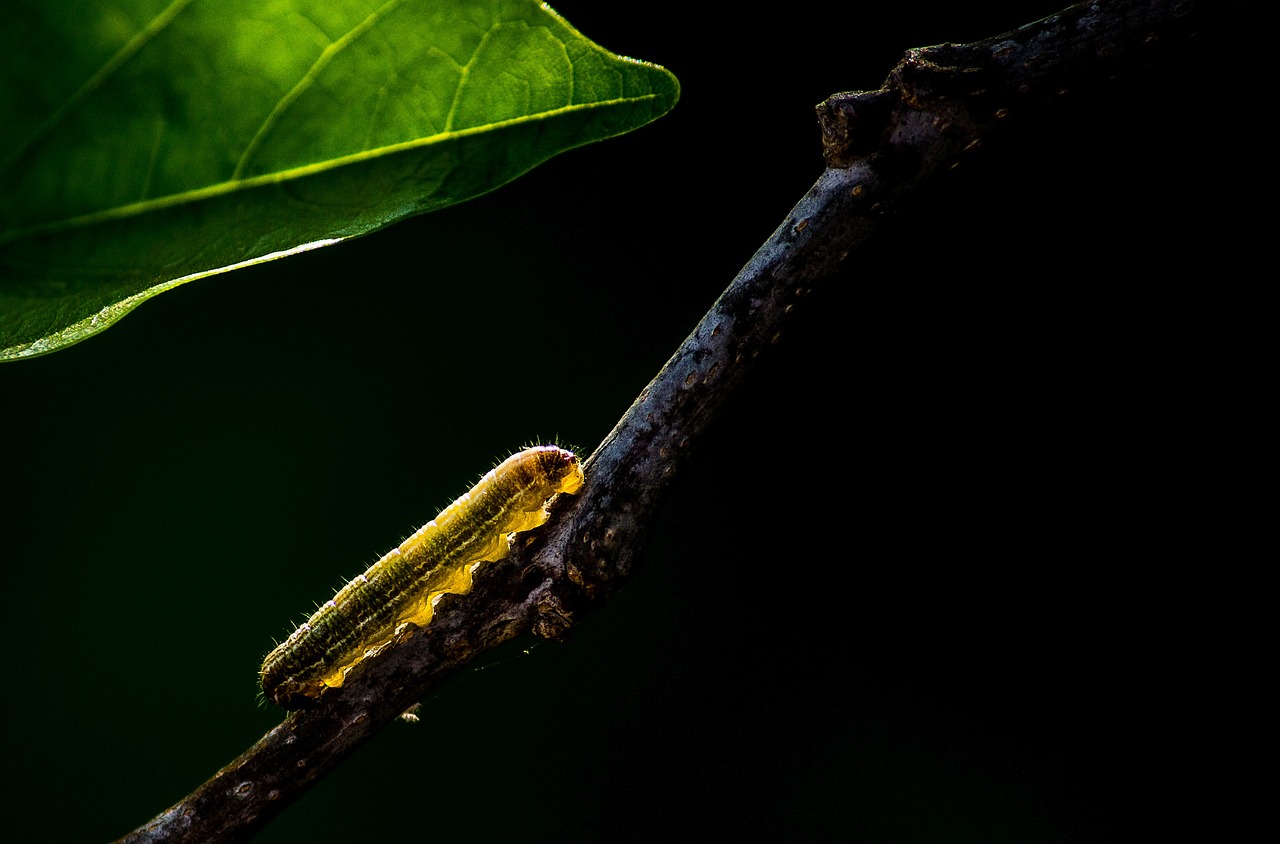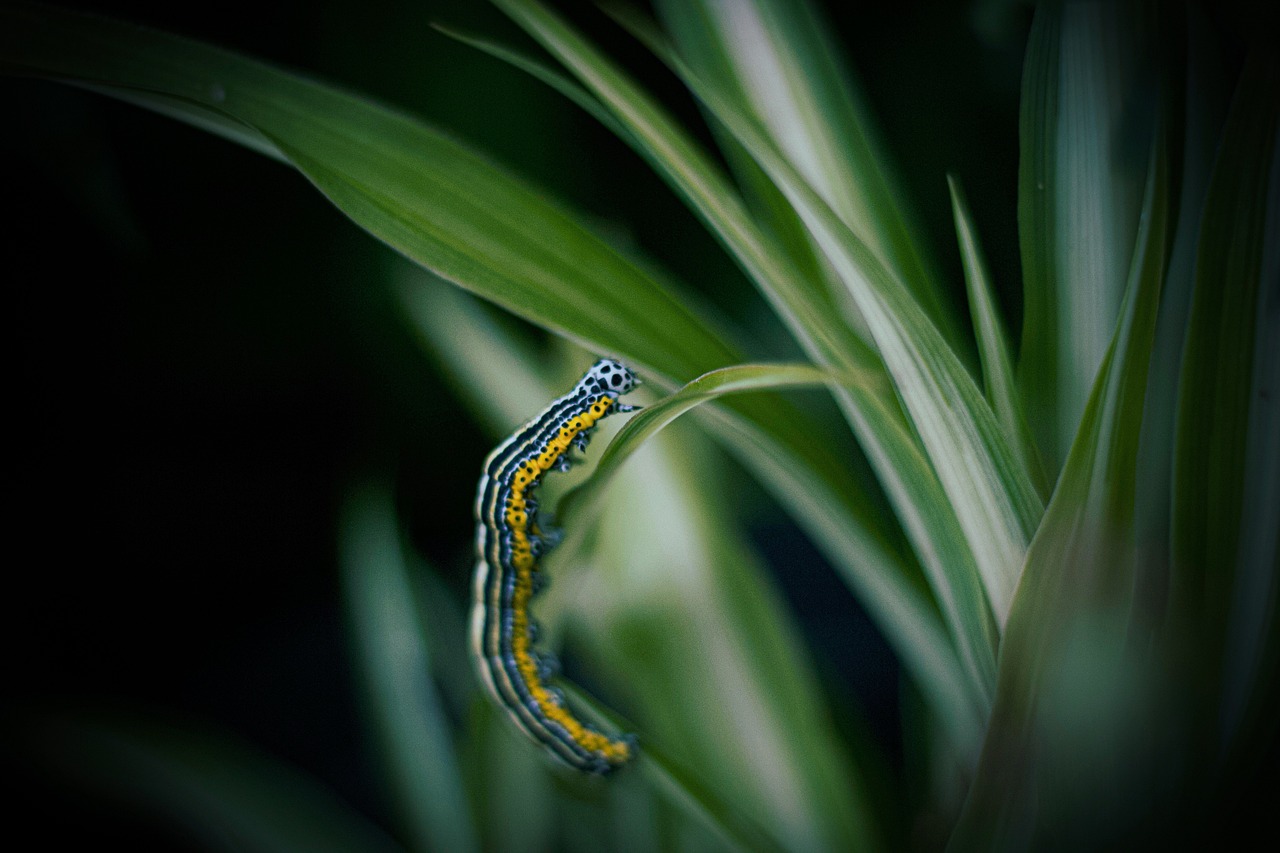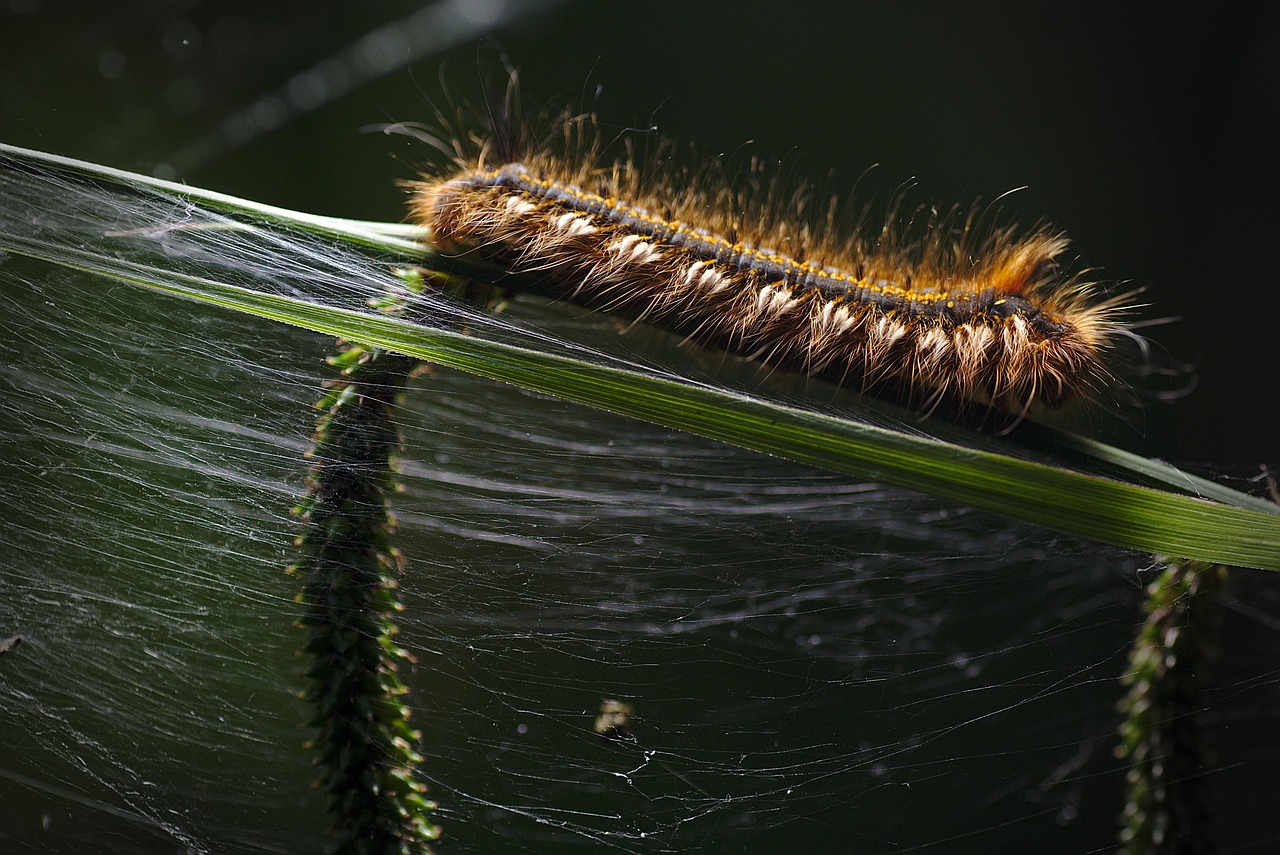Green caterpillars are fascinating creatures that often blend seamlessly into their surroundings. Their camouflage helps them evade predators while they munch on leaves in gardens and parks. Understanding these crawlers can enhance your gardening experience.
Caterpillars are the larval stage of moths and butterflies. They undergo a remarkable transformation, eventually emerging as beautiful adults. Among the various species, many are green, allowing them to hide among plants. This adaptation is a survival mechanism that has evolved over millions of years.

In gardens, green caterpillars can be both a blessing and a challenge. While they play a crucial role in the ecosystem as herbivores, they can also cause damage to plants. Knowing how to identify these creatures can help gardeners manage their presence effectively. Below are some key characteristics and facts about green caterpillars:
| Characteristic | Description |
|---|---|
| Color | Green, allowing for effective camouflage. |
| Size | Typically ranges from 1 to 4 inches long. |
| Diet | Primarily feed on leaves of various plants. |
| Life Cycle | Egg → Caterpillar → Pupa → Adult Moth or Butterfly. |
Understanding Green Caterpillars
The term “green caterpillar” encompasses a variety of species. Each has unique traits and behaviors, but they share the ability to camouflage with their environment. This feature not only aids in evasion from birds and other predators but also allows them to thrive in diverse habitats.
Some common species include the tomato hornworm, the cabbage looper, and the inchworm. Each of these species exhibits distinct feeding habits and preferences for certain types of plants. For instance, tomato hornworms are notorious for damaging tomato plants, while cabbage loopers prefer cruciferous vegetables like cabbage and broccoli.
- Tomato Hornworm: Large, green caterpillars that can grow up to 4 inches long. They have a distinctive horn on their rear end and are known for their voracious appetite.
- Cabbage Looper: Smaller and more slender, these caterpillars have a looping movement. They are typically found on cabbage and other leafy greens.
- Inchworm: Known for their unique inching movement, these caterpillars are often found on trees and shrubs, camouflaging well against branches and leaves.
The life cycle of green caterpillars contributes to their impact on gardens. After hatching from eggs, they enter the caterpillar stage, during which they feed extensively. This feeding stage can last several weeks, depending on the species and environmental conditions.
Caterpillars will molt multiple times as they grow. Each molt allows them to increase in size until they are ready to enter the pupal stage. This transformation is vital for their development into adult butterflies or moths, completing the cycle of life.
In gardens, recognizing the signs of caterpillar presence can help gardeners take appropriate action. Look for chewed leaves, frass (caterpillar droppings), and the caterpillars themselves. Early detection can prevent significant damage to plants.
Understanding green caterpillars is essential not just for managing gardens but also for appreciating the role these creatures play in the ecosystem. They serve as food for various birds and other wildlife, contributing to biodiversity.
Identifying Common Green Caterpillars
Identifying green caterpillars in your garden can be a straightforward task once you know what to look for. Different species exhibit unique features, behaviors, and feeding preferences. This knowledge enables gardeners to manage these pests effectively while appreciating their role in the ecosystem.
Key Identification Features
Identifying green caterpillars involves examining several physical characteristics. Here are some of the primary features to consider:
- Color Variations: While most green caterpillars are predominantly green, some may have hints of yellow or blue. This variation can be influenced by their diet.
- Body Shape: Some caterpillars have a robust body, while others are slender. For example, the tomato hornworm is plump, whereas the cabbage looper has a more elongated shape.
- Markings: Many species have distinctive markings. For instance, the tomato hornworm has white diagonal stripes along its sides, which can help in identification.
- Movement: Observing how they move can aid in recognition. Some caterpillars, like inchworms, move in a unique looping manner, while others crawl more straightforwardly.
Common Green Caterpillar Species
Here are some of the most commonly encountered green caterpillar species in gardens:
- Tomato Hornworm (Manduca sexta): This caterpillar is known for its size and voracious appetite. It can quickly strip leaves from tomato plants and is often found among the foliage.
- Cabbage Looper (Trichoplusia ni): This species is recognized for its looping movement. They feed on cabbage, kale, and other cruciferous plants, leaving behind noticeable damage.
- Black Swallowtail Caterpillar (Papilio polyxenes): These caterpillars are green with yellow and blue markings. They often feed on parsley, dill, and fennel.
- Eastern Tent Caterpillar (Malacosoma americanum): This species builds silk tents in trees and shrubs. Their green coloration helps them blend in with the leaves.
The Impact of Green Caterpillars on Gardens

While green caterpillars can be problematic for gardeners due to their feeding habits, they also play an essential role in the garden ecosystem. Understanding their impact requires considering both the potential damage they cause and their benefits.
Potential Damage
Caterpillars can cause significant damage to a variety of plants. Here are some common issues:
- Leaf Consumption: Many green caterpillars consume large amounts of foliage, which can weaken plants and reduce yields.
- Plant Stress: Excessive feeding can lead to stress in plants, making them more susceptible to diseases and environmental factors.
- Aesthetic Damage: Chewed leaves can make plants look unsightly, affecting the overall appearance of gardens and landscapes.
Benefits of Green Caterpillars
Despite their potential for causing damage, green caterpillars also contribute positively to the garden environment:
- Food Source: They serve as an essential food source for birds and other wildlife, promoting biodiversity.
- Pollination: Some species eventually transform into butterflies that play a role in pollinating flowers.
- Soil Enrichment: When they pupate and die, their bodies contribute nutrients back into the soil, enhancing soil health.
By recognizing both the challenges and benefits posed by green caterpillars, gardeners can adopt balanced approaches to manage these camouflaged crawlers effectively while supporting biodiversity in their gardens.

Managing Green Caterpillars in Your Garden

Managing green caterpillars effectively requires a blend of prevention, monitoring, and control strategies. By understanding their behavior and lifecycle, gardeners can implement measures that minimize damage while allowing beneficial species to thrive.
Preventive Measures
Prevention is often the best strategy when it comes to managing green caterpillars. Here are some effective preventive measures:
- Plant Selection: Choose plants that are less susceptible to caterpillar infestations. For example, native plants may attract fewer pests.
- Companion Planting: Use companion plants that repel caterpillars. Marigolds, for instance, can deter certain species.
- Healthy Soil: Maintain healthy soil through composting and mulching. Strong plants are less likely to succumb to pest damage.
Monitoring for Infestations
Regular monitoring of your garden is crucial for early detection of caterpillar infestations. Here are some tips:
- Visual Inspections: Regularly check the undersides of leaves, as many caterpillars prefer to hide there.
- Look for Signs of Damage: Early signs include holes in leaves and frass, which indicates active feeding.
- Use Traps: Consider using sticky traps or pheromone traps to monitor caterpillar populations and identify species.
Control Methods
If green caterpillars become a problem in your garden, several control methods can be employed, ranging from organic solutions to more traditional pesticides. It is essential to choose methods that align with your gardening philosophy.
Organic Control Options
For those seeking environmentally friendly solutions, organic methods can be highly effective:
- Handpicking: For small infestations, handpicking caterpillars off plants can be an efficient way to reduce numbers.
- Natural Predators: Encourage natural predators such as birds and beneficial insects like ladybugs and lacewings. Planting diverse flora can attract these helpful species.
- Diatomaceous Earth: This natural powder can be sprinkled around plants. It is harmless to humans and pets but can effectively deter caterpillars by damaging their exoskeletons.
Chemical Control Options
If infestations become severe, chemical controls might be necessary. However, caution should be exercised to minimize harm to beneficial insects:
- Bacillus thuringiensis (Bt): This organic pesticide targets caterpillars specifically without harming other insects. It is an effective option for controlling populations.
- Nematicides: Chemical products specifically designed to target caterpillar larvae can be applied when other methods fail. Always follow label instructions carefully.
- Insecticidal Soaps: These soaps can help control small caterpillar populations and are less harmful to beneficial insects compared to broad-spectrum pesticides.
Encouraging Biodiversity in the Garden
A thriving garden ecosystem can naturally limit pest populations, including green caterpillars. Here are some strategies for fostering biodiversity:
- Diverse Planting: Include a variety of plants in your garden to attract different species of beneficial insects and birds.
- Creating Habitats: Provide habitats such as birdhouses and insect hotels to encourage wildlife that preys on pests.
- Avoiding Mono-Cropping: Rotating crops and avoiding planting large areas with a single species can disrupt pest cycles and reduce infestations.
By implementing these management strategies, gardeners can effectively balance the presence of green caterpillars while maintaining a healthy garden ecosystem. This approach not only protects plants but also supports the natural interactions among various species in the environment.
Understanding the Lifecycle of Green Caterpillars
To manage green caterpillars effectively, it is essential to understand their lifecycle and behavior. Recognizing the stages of development can aid in identifying the right time for intervention. The lifecycle typically consists of four stages: egg, larva (caterpillar), pupa, and adult.
Egg Stage
The lifecycle begins when female moths or butterflies lay eggs on the host plants. These eggs are often small and can be found on the undersides of leaves. The duration of this stage varies depending on the species and environmental conditions.
Larval Stage
Once the eggs hatch, the green caterpillars emerge. This larval stage is characterized by rapid growth as they start feeding on leaves. This stage can last from a few weeks to several months, depending on food availability and temperature.
Pupal Stage
After reaching maturity, caterpillars enter the pupal stage. They often find a safe place to form a chrysalis or cocoon. During this time, they undergo a remarkable transformation into adult moths or butterflies.
Adult Stage
Finally, the adult emerges from the pupa, ready to mate and lay eggs, starting the cycle anew. Understanding this lifecycle helps gardeners anticipate when caterpillar populations might peak and take appropriate action.
Eco-Friendly Practices for Gardeners
In addition to the strategies already discussed, incorporating eco-friendly practices can enhance your gardening efforts. Here are some additional practices to consider:
- Organic Fertilizers: Use organic fertilizers to promote plant health and resilience against pests.
- Water Management: Ensure proper watering techniques to maintain plant health. Healthy plants are more resistant to pest damage.
- Mulching: Apply mulch to suppress weeds and retain soil moisture, creating a healthier environment for all plants.
Implementing these practices fosters a sustainable garden ecosystem. Sustainable gardening not only benefits plants but also encourages a variety of wildlife to thrive in harmony with your cultivated spaces.
Final Thoughts
Green caterpillars can be both intriguing and challenging for gardeners. Their remarkable ability to camouflage themselves in gardens highlights the importance of understanding their behavior and lifecycle. While they may cause damage, recognizing their ecological role is crucial for creating a balanced garden environment.
By employing preventive measures, monitoring strategies, and appropriate control methods, gardeners can manage green caterpillar populations effectively. Encouraging biodiversity through diverse planting and creating habitats enhances the natural balance in gardens.
Ultimately, fostering an appreciation for these camouflaged crawlers can lead to a more harmonious relationship between gardening practices and nature. As you cultivate your garden, remember that every creature plays a role in the intricate web of life that surrounds us.
